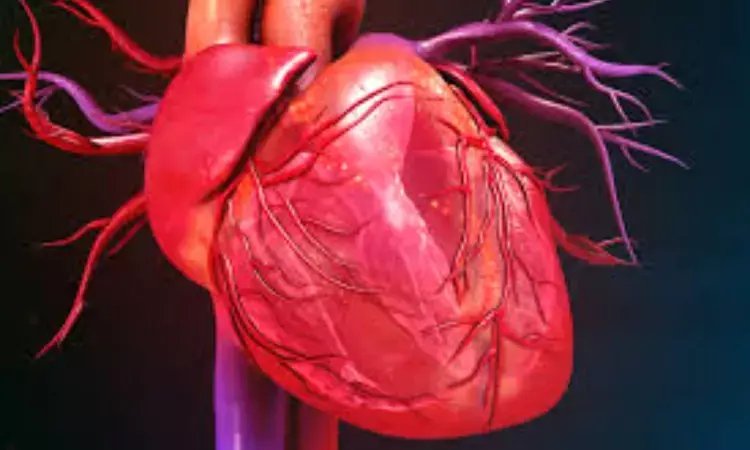- Home
- Medical news & Guidelines
- Anesthesiology
- Cardiology and CTVS
- Critical Care
- Dentistry
- Dermatology
- Diabetes and Endocrinology
- ENT
- Gastroenterology
- Medicine
- Nephrology
- Neurology
- Obstretics-Gynaecology
- Oncology
- Ophthalmology
- Orthopaedics
- Pediatrics-Neonatology
- Psychiatry
- Pulmonology
- Radiology
- Surgery
- Urology
- Laboratory Medicine
- Diet
- Nursing
- Paramedical
- Physiotherapy
- Health news
- Fact Check
- Bone Health Fact Check
- Brain Health Fact Check
- Cancer Related Fact Check
- Child Care Fact Check
- Dental and oral health fact check
- Diabetes and metabolic health fact check
- Diet and Nutrition Fact Check
- Eye and ENT Care Fact Check
- Fitness fact check
- Gut health fact check
- Heart health fact check
- Kidney health fact check
- Medical education fact check
- Men's health fact check
- Respiratory fact check
- Skin and hair care fact check
- Vaccine and Immunization fact check
- Women's health fact check
- AYUSH
- State News
- Andaman and Nicobar Islands
- Andhra Pradesh
- Arunachal Pradesh
- Assam
- Bihar
- Chandigarh
- Chattisgarh
- Dadra and Nagar Haveli
- Daman and Diu
- Delhi
- Goa
- Gujarat
- Haryana
- Himachal Pradesh
- Jammu & Kashmir
- Jharkhand
- Karnataka
- Kerala
- Ladakh
- Lakshadweep
- Madhya Pradesh
- Maharashtra
- Manipur
- Meghalaya
- Mizoram
- Nagaland
- Odisha
- Puducherry
- Punjab
- Rajasthan
- Sikkim
- Tamil Nadu
- Telangana
- Tripura
- Uttar Pradesh
- Uttrakhand
- West Bengal
- Medical Education
- Industry
Over-the-counter opioids associated with ventricular arrhythmias: JACC

USA: The over-the-counter opioids loperamide and mitragynine, the herbal ingredient in kratom, are increasingly utilized to avert opioid withdrawal or induce euphoria. A recent study in the Journal of the American College of Cardiology linked these drugs to disproportionate reports of life-threatening ventricular arrhythmia.
Antidiarrheal drug loperamide, a weak synthetic opioid, was linked with ventricular arrhythmia (proportional reporting ratio [PRR] 3.2), with 37% of the 1,008 FAERS (FDA Adverse Event Reporting System) reports involving death. For mitragynine, the primary active ingredient in the herbal supplement kratom, the arrhythmic signal was worse -- an 8.9 PRR. Fully 91% of its 46 FAERS reports resulted in death.
Epidemic rises in opioid deaths prompted policies limiting access to prescription opioids in North America. Consequently, the OTC opioids loperamide (Imodium A-D) and mitragynine are increasingly used to induce euphoria or avert withdrawal. No systematic studies have been performed for arrhythmia events related to these nonscheduled drugs.
"As both readily available drugs have come to be used to curb opioid cravings at large doses, their hazards have taken on urgency amid the crackdown on prescription opioid access," the authors noted.
Mori J. Krantz, Global Cardiac Safety, Clario, Philadelphia, Pennsylvania, USA, and colleagues sought to explore opioid-associated arrhythmia reporting in North America.
For this purpose, the researchers searched the Center for Food Safety and Applied Nutrition Adverse Event Reporting System (CAERS), U.S. Food and Drug Administration Adverse Event Reporting System (FAERS), and Canada Vigilance Adverse Reaction (CVAR) databases from 2015-2021. They identified reports involving diphenoxylate/atropine (Lomotil) and nonprescription drugs (mitragynine, loperamide).
Methadone, a prescription opioid (full agonist), was a positive control due to its established arrhythmia risk. Naltrexone (pure antagonist) and buprenorphine (partial agonist) were negative controls. Reports were classified according to Medical Dictionary for Regulatory Activities terminology.
Significant disproportionate reporting required a PRR of ≥2, ≥3 cases, and chi-square ≥4. The primary analysis used FAERS data, whereas CAERS and CVAR data were confirmatory.
The authors reported the following findings:
- Methadone was disproportionately associated with ventricular arrhythmia reports (PRR: 6.6; n = 1,163; chi-square = 5,456), including 73% fatalities.
- Loperamide was also significantly associated with arrhythmia (PRR: 3.2; n = 1,008; chi-square = 1,537), including 37% of deaths.
- Mitragynine demonstrated the highest signal (PRR: 8.9; n = 46; chi-square = 315), with 91% deaths.
- Diphenoxylate, buprenorphine, and naltrexone were not associated with arrhythmia.
- Signals were similar in CVAR and CAERS.
"Over-the-counter agents (loperamide and mitragynine) misused to induce euphoria or curb opioid withdrawal at high doses were linked to a disproportionate number of lethal arrhythmias reported to national pharmacovigilance systems," Krantz and the team concluded.
Reference:
The study, "Ventricular Arrhythmias Associated With Over-the-Counter and Recreational Opioids," was published in the Journal of the American College of Cardiology. DOI: https://www.jacc.org/doi/10.1016/j.jacc.2023.04.009
Dr Kamal Kant Kohli-MBBS, DTCD- a chest specialist with more than 30 years of practice and a flair for writing clinical articles, Dr Kamal Kant Kohli joined Medical Dialogues as a Chief Editor of Medical News. Besides writing articles, as an editor, he proofreads and verifies all the medical content published on Medical Dialogues including those coming from journals, studies,medical conferences,guidelines etc. Email: drkohli@medicaldialogues.in. Contact no. 011-43720751


